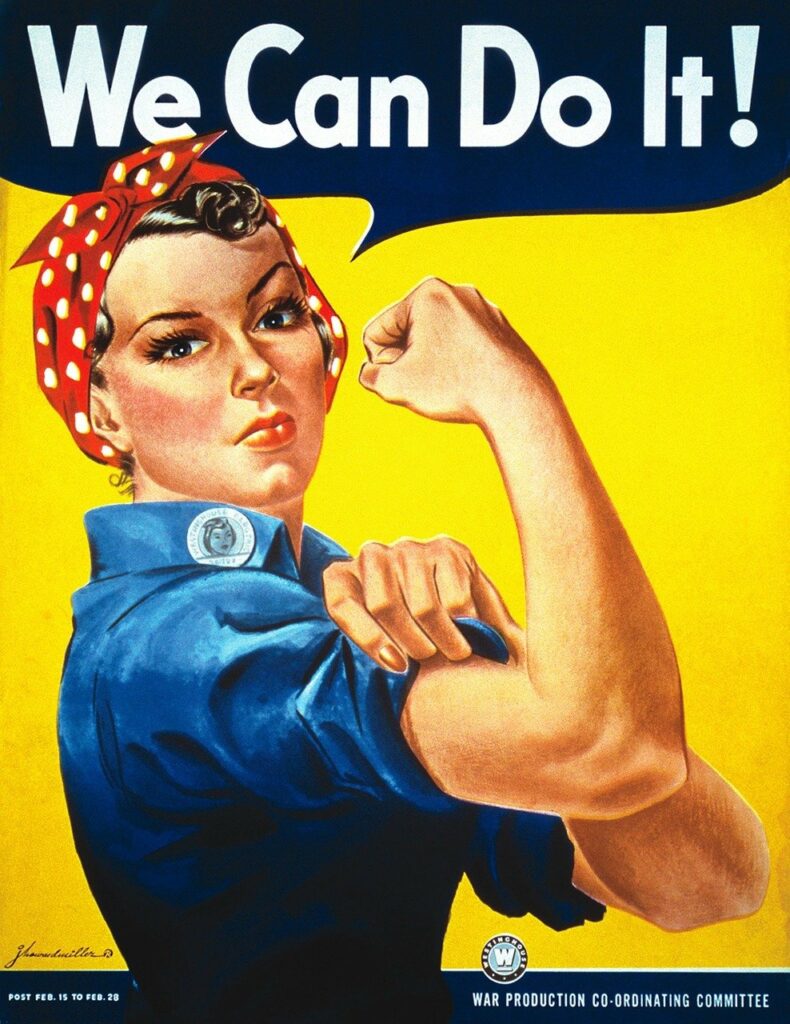It’s that time of year when we celebrate International Women’s Day. Friday, March 8th, women from around the world will be in the spotlight for their accomplishments. While this includes all sectors and industries, this blog will focus on manufacturing. So, let’s take a look at women in manufacturing to see how far we have – or haven’t – come.
Women’s contributions in the manufacturing industry have been significant throughout the years. As the industry continues to evolve, it also opens doors for female leaders, offering many opportunities. Despite being a traditionally male-dominated field, the percentage of women in manufacturing is on the rise, marking a definite shift in inclusivity. This progress reflects not only the changing demographics of the industry, but also the important role women play in shaping its future.
When women began working in manufacturing
Women entered this sector during the industrial revolution, particularly in the textile mills. However, it was during World War II, when men were away at war, that women significantly infiltrated the manufacturing industry. This period saw an unprecedented surge in the number of women taking up roles in factories, marking their undeniable presence in the sector. That time period brought about an iconic character named “Rosie the Riveter” in the United States. She was seen on posters encouraging other women to join the World War II effort with declaring, “We Can Do It!”

But the end of the war led to a decrease in women working in manufacturing facilities and many returned to traditional roles at home. It wasn’t until the mid-to-late 20th century when there was another rise in women working in the industry. New technologies and the fact that many required a high school education played a big role in this resurgence.
Paving the way in a predominantly male-dominated industry
The representation of women in the manufacturing industry has been steadily increasing, despite traditional gender biases. The most recent data from the U.S Census Bureau reveals that women comprise about 29% of the entire sector’s workforce. This figure represents a considerable jump from previous decades, indicating a tangible shift towards gender parity within the sector.
In specific roles within the industry, such as production, transportation, and material moving occupations, women make up about 26.7% of the workforce. However, the gender disparities are still significant, with men holding the majority of roles at 67.9%.
This increasing representation of women in manufacturing is not just limited to the factory floor. Women are also making strides in leadership roles within the industry. However, they still only fill about 26% of industry leadership positions. This underscores the need for continued efforts to promote gender equality at all levels in the manufacturing industry.
A recent 2024 survey by the WiM Association and Xometry on career advancement and women in the manufacturing sector, reveals the following key trends from 997 qualified responses.
- 81% of women recommend a career in manufacturing (compared to 74% of men), a number that has remained steady year after year
- 83% of respondents report labor shortages, particularly for entry-level positions. Companies need to find ways to encourage women to intentionally seek out manufacturing as a career option and offer student programs such as internships and apprenticeships for female students
- 71% of women enter the manufacturing industry unintentionally, compared to 56% of men. Most women report joining the industry through job postings, co-op programs, and recruitment, whereas most men join the industry through family businesses, apprenticeships or internships, and STEM programs. Companies need to intentionally create educational and career opportunities for women and introduce manufacturing as a career to young women early
- 90% of women believe that diversity improves business outcomes. It’s not just about recruiting women – it’s also about ensuring women’s voices are heard at every level of an organization
Making strides around the world
As of recent statistics, the global percentage of women in the manufacturing industry is not as high as in the U.S, but it’s gradually increasing. Worldwide, the number of women in manufacturing varies significantly by country. Women in higher-skilled manufacturing roles and leadership positions remains low globally, however. various factors influence, including cultural norms, educational opportunities, and government policies.

While it’s clear that progress is being made, the global manufacturing industry still has a long way to go in achieving gender parity. The percentage of women in manufacturing globally is a critical indicator of the industry’s inclusivity and diversity. The aim should be to continue increasing this percentage, ensuring more women have the opportunity to contribute to this vital industry.
What are the challenges for women in manufacturing?
Despite the progress made, women in manufacturing still face numerous challenges. A principal issue is the gender gap, particularly in leadership roles or the C-suite. Even though women make up almost a third of the manufacturing workforce, they account for only 26% of industry leadership positions. This disparity links to prevailing stereotypes and gender biases within organizational structures, which can undervalue women’s contributions and capabilities.
Attracting and retaining women in manufacturing can be challenging due to the field’s traditional male dominance. Manufacturing companies may need to adopt a different approach to recruiting, retaining, and advancing women in the workplace.
A history lesson on International Women’s Day
To understand the significance of International Women’s Day for women in manufacturing, let’s look back at its origins. The first International Women’s Day was observed on March 19, 1911. It was later moved to March 8 in 1913, with rallies held in various European countries. The United Nations started officially recognizing it in 1975.
The day has roots in the labor movement, with Clara Zetkin founding it in 1910. It was initially a platform for women to demand better working conditions and voting rights. Over time, it has evolved into a global celebration acknowledging the economic, political, and social achievements of women.
In the context of manufacturing, the day serves as an opportunity to spotlight women’s contributions to the industry. Celebrations often include acknowledging women in leadership roles, promoting gender equality initiatives, and highlighting the need for further inclusion and diversity in the sector. It’s a day to reflect on women’s journey in manufacturing, from historical contributions to their current roles and future aspirations.
This year’s theme is “Inspire Inclusion”. As their panel declared, “When we inspire others to understand and value women’s inclusion, we forge a better world. And when women themselves are inspired to be included, there’s a sense of belonging, relevance, and empowerment.”
How to “Inspire inclusion” and get involved
Become a member of a DELMIA User Community, your best connection to the people, content and resources at DELMIA
Join the WiM (Women in Manufacturing) a national association dedicated to supporting, promoting and inspiring women in all manufacturing job functions
Seek out job opportunities in technology and manufacturing on the Dassault Systèmes Careers page
Hear how other women have been succeeding in the manufacturing and technology industries. Listen to DELMIA’s podcast series, “Let’s Get Technical: Meet the Outstanding Women in Manufacturing and Technology:”
- Episode 35 with Barbara Roos at Ab Ovo and supply chain/logistics
- Episode 28 and episode 29 featuring Dassault Système’s Women’s Group
- Episode 23 with Regina Davis and Manufacturing Day
- Episode 21 with Angela Grigonis Regan and WiM

